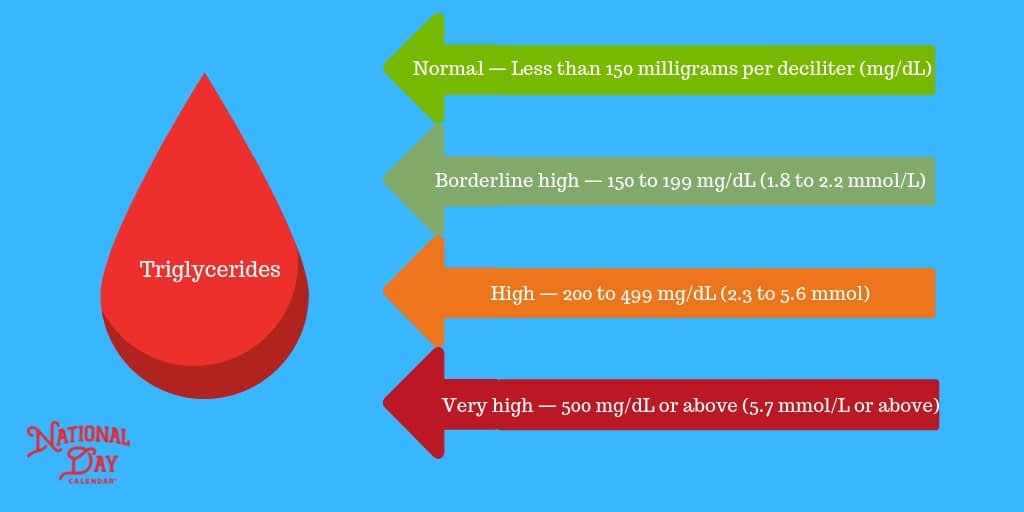On March 28, National Triglycerides Day shines a spotlight on one of the key factors to a healthy lifestyle.
The observance serves as a reminder to patients and practitioners to know about the hidden risks of triglycerides. Learn your numbers and take steps to bring them to healthy levels.

High levels of triglycerides in your blood can be a risk factor for heart disease. Triglycerides are different from cholesterol, though they are both a type of lipid or fat stored in your blood. They serve different purposes. While triglycerides store unused calories and give the body energy, cholesterol builds cells and some hormones.

Monitoring triglycerides is important for heart health. A blood test will tell you if your triglycerides are within normal limits. If they’re not, high triglycerides can be a sign of other conditions such as: Type 2 diabetes or prediabetes; Metabolic syndrome (cholesterol, weight and blood sugar are all a factor); Hypothyroidism; rare genetic conditions.
Include a triglycerides check with your routine physical exam. Visit with your doctor to learn how triglycerides impact your health. Ask your doctor for advice on how to maintain healthy levels, too. Your primary care is your go-to source and will be able to guide you on your risk factors.

National Triglycerides Day was founded in 2018 to encourage awareness of healthy triglyceride levels and the role they play in a healthy lifestyle. The Registrar at National Day Calendar proclaimed the day to be observed on March 28th.
According to nationaldaycalendar.com







